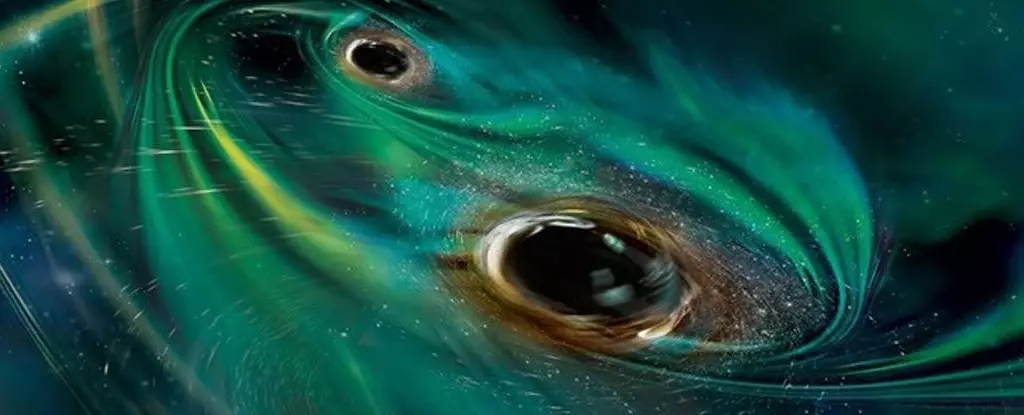In March 2021, a team of astronomers made a remarkable observation: a high-energy burst of light emanating from a distant galaxy. Initially categorized as a supernova, this event, dubbed AT 2021hdr, quickly attracted attention due to its unusual characteristics. The Automatic Learning for the Rapid Classification of Events (ALeRCE) detected enough anomalies in the data to prompt deeper investigation, leading astronomers to reconsider the nature of this celestial phenomenon.
As further observations rolled in, particularly from the Zwicky Transient Facility (ZTF), a captivating pattern emerged. Every 60 to 90 days, the bursts appeared to repeat, suggesting that AT 2021hdr was not simply a transient supernova event. The cycle of outbursts invited speculation about its true nature. The astrophysical community considered various hypotheses, including the possibility of a tidal disruption event (TDE), wherein a star ventures perilously close to a black hole, only to be torn apart by gravitational forces.
However, as researchers delved deeper, the characteristics of the bursts did not entirely align with typical TDEs, which usually lack the regularity observed in AT 2021hdr. This led scientists to explore alternative models, particularly focusing on the interaction between massive interstellar clouds and binary black holes.
A pivotal shift in understanding arose when computer simulations indicated that a binary black hole could act upon a passing cloud in a distinctly dynamic way. Instead of merely disrupting the cloud, these black holes would engage in a turbulent consumption process, resulting in periodic bursts of light as they orbited each other. Excitingly, observations conducted using the Neil Gehrels Swift Observatory provided further validation for this idea, revealing oscillations in ultraviolet and X-ray light that correlated perfectly with the transient outbursts documented by the ZTF.
This compelling correlation supports the binary black hole model, suggesting a staggering combined mass of roughly 40 million solar masses. The two black holes appear to orbit one another every 130 days, and projections indicate they are on a collision path, anticipated to merge in approximately 70,000 years.
The implications of such findings extend beyond the immediate observation of AT 2021hdr. The fact that these black holes would remain undetected without the presence of the interstellar cloud underscores a critical aspect of astronomical research: many celestial phenomena might go unnoticed without coincidental trigger events. By continuing their observations, the team aims to refine their existing model and deepen their understanding of how binary black holes interact with their home galaxies.
Overall, AT 2021hdr lights the way toward a new era of astrophysical inquiry, revealing not just the complexity of cosmic events but also the potential for future discoveries as astronomers refine their observational techniques and modeling approaches. The universe continues to offer enigmas, and as we enhance our capacity to unlock these mysteries, we gain deeper insights into the compelling dynamics governing celestial bodies.

